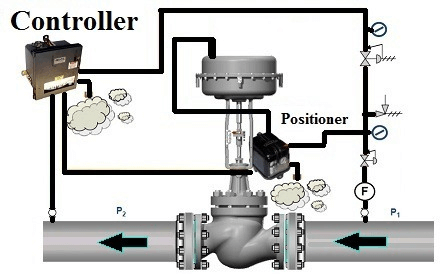Important Elements to Consider When Picking Control Valves
Important Elements to Consider When Picking Control Valves
Blog Article

Maximize Power Financial Savings and Convenience With Advanced Structure Automation Controls
In the world of contemporary design and center monitoring, the integration of innovative structure automation manages stands as an essential innovation. By harnessing the power of automation, structures can adapt, react, and advance in ways that were once unimaginable.
Energy Performance Advantages
Power effectiveness advantages can considerably decrease power consumption and functional prices in buildings. By implementing energy-efficient methods and innovations, structure proprietors and drivers can attain significant savings while likewise adding to environmental sustainability. Among the main benefits of enhancing energy performance in structures is the decrease of utility expenses. Energy-efficient systems, such as innovative building automation controls, can optimize making use of sources like illumination, cooling, and heating, causing reduced power costs over time.
In addition, improved energy performance can lengthen the life-span of structure equipment and systems. By operating a lot more successfully, a/c systems, lighting fixtures, and other structure elements experience much less damage, resulting in lowered upkeep and replacement expenses. Additionally, energy-efficient structures commonly command higher building worths and rental rates, providing lasting monetary advantages to owners.
Moreover, power effectiveness can improve resident comfort and performance. Appropriately controlled indoor atmospheres with optimum illumination and thermal problems develop a more favorable and enjoyable workspace, bring about improved staff member contentment and efficiency. In general, the energy efficiency benefits related to advanced structure automation controls are complex, including price financial savings, ecological stewardship, and owner well-being.
Enhanced Convenience Control
Enhancing convenience control in building settings requires a sophisticated combination of sophisticated automation systems for optimal occupant health. By using sophisticated building automation controls, facilities can customize the interior atmosphere to meet the details requirements and preferences of passengers. control valves.
By integrating these sophisticated controls, structures can not just improve convenience however also enhance energy effectiveness by optimizing system operations based on real tenancy and usage patterns. Inevitably, focusing on passenger comfort with sophisticated automation systems leads to a much more delightful and much healthier indoor setting.
Operational Performance Improvements

In addition, the implementation of real-time tracking and analytics tools enables building drivers to identify energy inefficiencies and operational abnormalities immediately. By continuously monitoring energy use patterns and system performance metrics, modifications can be made in real-time to enhance power consumption and guarantee peak operational efficiency. control valves. Additionally, incorporating demand response approaches right into structure automation controls can additionally improve functional efficiency by dynamically changing power use based upon grid conditions and pricing signals
Indoor Environment Optimization
Efficient indoor environment optimization is a fundamental aspect of building automation controls, ensuring occupants' convenience and well-being while optimizing power savings. By using innovative sensors and controls, building automation systems can constantly adjust and check temperature level, moisture levels, air quality, and air flow to develop an optimal indoor environment. Maintaining consistent and comfortable problems not just improves passenger fulfillment however additionally improves Home Page performance and total well-being.
Indoor climate optimization also plays an important duty in energy effectiveness. By fine-tuning cooling, air flow, and heating systems based upon real-time data and occupancy patterns, developing automation controls can substantially decrease power intake - control valves. Carrying out strategies such as demand-controlled ventilation and thermal zoning can help minimize energy waste while ensuring that each location of the structure obtains the needed conditioning.

Sustainable Environment Development
Building automation controls not just maximize indoor climate conditions for power efficiency and resident convenience however likewise lay the foundation for developing a lasting setting with tactical administration of systems and resources. By incorporating advanced building automation modern technologies, such as sensors, actuators, and smart software, centers can change and monitor energy use in real-time to reduce waste and minimize their carbon impact. These systems enable anticipating maintenance, recognizing prospective issues prior to they intensify and enhancing tools performance to boost durability and efficiency.
Additionally, sustainable setting production expands past power administration to incorporate water conservation, waste reduction, and interior air top quality enhancement. Structure automation controls can regulate water use, identify leaks, and ensure proper garbage disposal techniques, adding to overall sustainability initiatives. Furthermore, by checking and regulating air flow and purification systems, these modern technologies enhance resident health and wellness and productivity while decreasing energy intake associated with a/c procedures.
Conclusion
To conclude, progressed structure automation controls offer considerable advantages in terms of power financial savings, convenience control, functional efficiency, indoor climate optimization, and developing a sustainable try this site environment. By carrying out these controls, buildings can achieve optimal performance while reducing energy consumption and improving resident comfort. It is obvious that using innovative automation innovation is essential in enhancing building performance and producing an extra lasting future.
Energy efficiency advantages can considerably reduce power intake and functional expenses in buildings. Overall, the power efficiency benefits associated with sophisticated building automation controls are diverse, including expense savings, ecological stewardship, and resident health.
Furthermore, including demand feedback techniques right into structure automation controls can further improve operational effectiveness by dynamically adjusting energy use based on grid conditions and prices signals.
Structure automation regulates not just enhance indoor environment conditions for power effectiveness and resident convenience but likewise lay the foundation for producing a lasting environment with calculated monitoring of systems and sources.In verdict, progressed building automation manages deal significant advantages in terms of energy savings, comfort control, operational performance, interior environment optimization, and developing a lasting setting.
Report this page